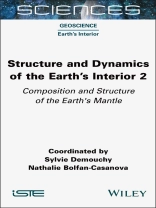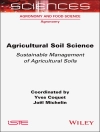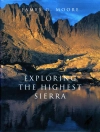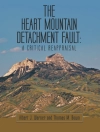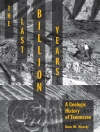The interior of our planet is one of the last ’terra incognita’. Its chemical composition and onion-like structure of solid rocks and rare minerals make it a fascinating object. It is primarily its dynamic that makes Earth such a singular object in the solar system, with perennial, active plate tectonics for several billion years.
While its dynamic is obvious on the surface (earthquakes, volcanic eruptions, mid-oceanic rifts), the very nature of the Earth’s mantle – beneath the crust and in contact with the core – has not revealed all of its secrets.
Structure and Dynamics of the Earth’s Interior 2 recalls the fundamental principles of several key physicochemical properties of the materials which make up the Earth’s mantle. This book then describes the latest technological advances used at high pressures and temperatures to reproduce the extreme conditions of the Earth’s mantle in the laboratory. It also presents the latest and most significant scientific results.
Inhoudsopgave
Foreword xi
Michel GRÉGOIRE
Chapter 1 The Earth’s Mantle: Phase Diagrams and Mineralogical Composition 1
Jean-Philippe PERRILLAT
1.1 Introduction 1
1.2 Phase relationships: experiments and models 2
1.2.1 The experimental approach 3
1.2.2 The thermodynamic approach 4
1.3 Minerals in the Earth’s mantle 7
1.3.1 The effects of pressure and temperature on crystal structures 7
1.3.2 The Si O2 system 9
1.3.3 The Mg O-Fe O-Si O2 system 10
1.3.4 The Ca O-Mg O-Al2O3-Si O2 -Fe O(CMASF) system 15
1.4 Phase diagrams of ultra basic rocks, seismic discontinuities and mantle dynamics 17
1.5 Phase diagram of subducted basalts and fate of plates in the deep mantle 21
1.6 D” zone and bridgmanite–post-perovskite transition 23
1.7 Conclusion 24
1.8 References 25
Chapter 2 Seismology of the Earth’s Mantle 33
Stéphanie DURAND, Benoît TAUZIN and Éric DEBAYLE
2.1 Introduction 33
2.2 The architecture of the mantle: seismic discontinuities 39
2.2.1 Seismology with arrays of sensors 39
2.2.2 The mantle transition zone 41
2.2.3 The D” layer near the core-mantle boundary 47
2.3 The drapery: three-dimensional variations of seismic velocities 52
2.3.1 Tomographic inversions 52
2.3.2 The lithosphere–asthenosphere system 56
2.3.3 The mid-mantle 58
2.3.4 LLSVPs 60
2.4 Mantle flow and partial melting: seismic anisotropy and attenuation 61
2.4.1 Azimuthal and radial anisotropy 61
2.4.2 Attenuation in the Earth’s mantle 63
2.5 References 68
Chapter 3 The Deep Hydrogen Cycle 83
Nathalie BOLFAN-CASANOVA and Bertrand MOINE
3.1 Introduction 83
3.2 The origin of terrestrial water 84
3.2.1 The message of meteorites 84
3.2.2 The age of the oceans: the rock record 87
3.3 Water distribution in the various onshore reservoirs 87
3.3.1 Surface reservoirs 87
3.3.2 Deep Earth reservoirs 87
3.3.3 Water storage capacity in the mantle 100
3.3.4 The effect of water on mantle melting 100
3.3.5 Water transfers between reservoirs 101
3.4 Hydrothermal weathering on the ocean floor 101
3.4.1 Subduction and dehydration of the subducted plate 103
3.4.2 Hydrogen speciation 106
3.5 References 107
Chapter 4 The Role of Volatile CO2 -H2O Species in the Melting of the Earth’s Mantle 115
Malcolm MASSUYEAU and Tahar HAMMOUDA
4.1 Presence and storage of carbon and hydrogen in the upper mantle 116
4.2 Effects of CO2 and H2O on melting temperatures in the Earth’s peridotitic mantle 118
4.2.1 H2O partitioning between magmatic liquid and silicate minerals, and mantle melting in the presence of water 118
4.2.2 Low carbonate melting temperatures 123
4.2.3 Simultaneous presence of CO2 and H2O in the peridotitic mantle 124
4.3 Composition of mantle magmas in the presence of CO2 and H2O 125
4.3.1 Composition of magmatic liquids as a function of P-T-X conditions 126
4.3.2 Composition and fraction of magmatic liquid produced in the mantle 128
4.4 Impact of CO2 and H2O on the mantle’s geophysical signatures 133
4.5 References 135
Chapter 5 Oxygen Fugacity in the Mantle 147
Alan B. WOODLAND
5.1 Introduction 147
5.2 Equilibria with iron oxides 147
5.3 The significance of oxygen fugacity 151
5.4 The ƒO2 importance for processes in the Earth’s interior 154
5.4.1 The stability of ferriferous minerals 154
5.4.2 The stability of carbon-bearing phases 155
5.4.3 The possibility of a metallic phase 156
5.4.4 Trace element behavior 157
5.4.5 C-O-H fluid composition and redox melting 159
5.4.6 Partial melting conditions in the upper mantle 162
5.5 Determining the ƒO2 content of a rock 164
5.6 The ƒO2 of the upper mantle (lithospheric) 169
5.6.1 Oceanic ridges 169
5.6.2 Subduction zones 171
5.6.3 The subcontinental lithospheric mantle 173
5.6.4 Orogenic massifs 174
5.6.5 The cratonic lithosphere 175
5.6.6 The message from eclogites 176
5.7 Redox conditions in the deep mantle 178
5.8 A final word 181
5.9 References 182
Chapter 6 Elasticity and Composition of the Earth’s Mantle 193
Tiziana BOFFA-BALLARAN
6.1 Elasticity 194
6.1.1 The effect of crystal symmetry on the elasticity 197
6.1.2 A special state of stress: hydrostatic pressure 198
6.1.3 Reuss and Voigt bounds 201
6.1.4 Isothermal and adiabatic moduli 202
6.2 Elastic waves 203
6.3 Polycrystalline materials 206
6.4 Experimental techniques 208
6.4.1 Instruments for generating high pressure and high temperature 208
6.4.2 Static compression experiments 209
6.4.3 Ultrasonic methods 210
6.4.4 Light scattering techniques 211
6.5 Models of the Earth’s interior 212
6.6 References 216
Chapter 7 Earth’s Mantle Rheology 221
Sylvie DEMOUCHY and Patrick CORDIER
7.1 Introduction 221
7.2 Ductile deformation: mechanisms 223
7.2.1 Point defects 223
7.2.2 Line defects: dislocations 226
7.2.3 Grain boundaries 229
7.3 Observables 231
7.4 Methodological approaches 233
7.4.1 Field 233
7.4.2 Laboratory-based experiments 234
7.4.3 Looking at the deformation through a microscope 236
7.4.4 Multiscale numerical modelling 236
7.5 Deformation in the upper mantle 237
7.6 Deformation in the mantle transition zone 240
7.7 Deformation in the lower mantle 242
7.8 Conclusion 244
7.9 References 245
Chapter 8 Laboratory Measurements of Electrical Conductivity and their Applications to Planetary Interiors 249
Geeth MANTHILAKE
8.1 Theoretical background 249
8.2 Laboratory measurements of electrical conductivity 251
8.2.1 Two-terminal method 251
8.2.2 Four-terminal method 251
8.2.3 Impedance spectroscopy technique 252
8.2.4 Electrical conductivity measurements at high pressure and high temperature 254
8.3 Laboratory measurements of electrical conductivity 255
8.3.1 Ionic conduction 256
8.3.2 Hopping (small polaron) conduction 257
8.3.3 Proton conduction 257
8.4 Electrical conductivity of a composite medium 257
8.5 Factors affecting the electrical conductivity of planetary materials 258
8.5.1 Effect of pressure and temperature 259
8.5.2 Effect of chemistry 260
8.5.3 Effect of oxygen fugacity 261
8.5.4 Influence of crystallographic orientation of minerals 262
8.5.5 Influence of grain boundaries 262
8.5.6 Effects of dehydration and fluid release 263
8.5.7 Effects of melting 264
8.6 The modeling of electrical conductivity data for planetary applications 265
8.6.1 To detect chemical heterogeneities in the mantle 266
8.6.2 Electrical conductivity as a geothermometer 267
8.6.3 As a tool to constrain water content in the mantle 269
8.6.4 Applications to melting in planetary interiors 270
8.6.5 Fluid circulation in subduction zones 271
8.6.6 Electrical conductivity in metals: applications to thermal transporting properties 272
8.6 References 273
List of Authors 279
Index 281
Over de auteur
Sylvie Demouchy is Research Director at the CNRS, France, and joined the Magmas and Volcanoes Laboratory in 2022. She is a geologist and experimentalist specializing in defects in deep Earth minerals.
Nathalie Bolfan-Casanova is Research Director at the CNRS, France, and joined the Magmas and Volcanoes Laboratory in 2003. She is a spectroscopist and experimentalist specializing in the incorporation of water into the deep Earth.
